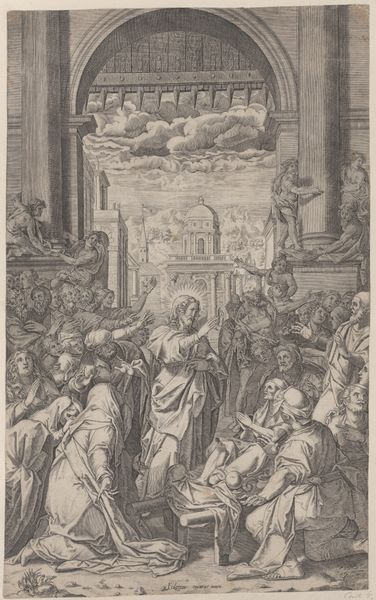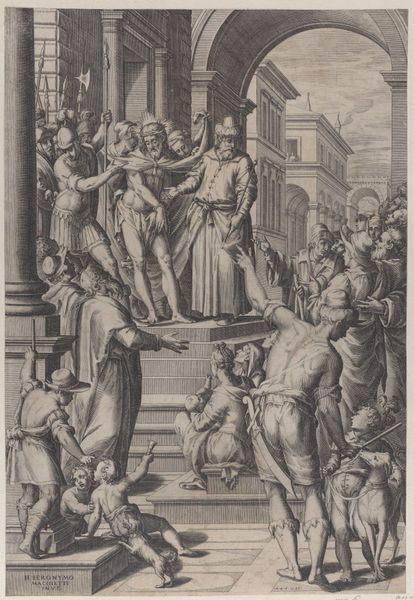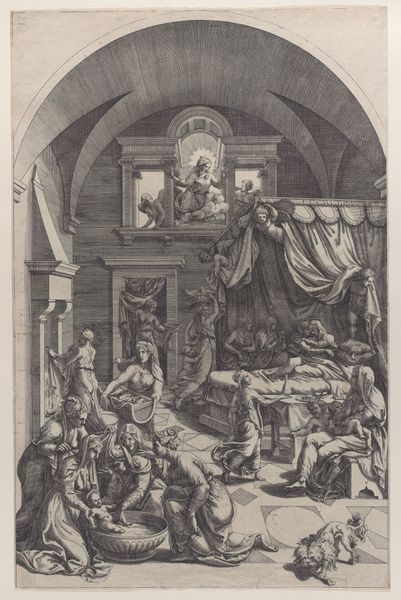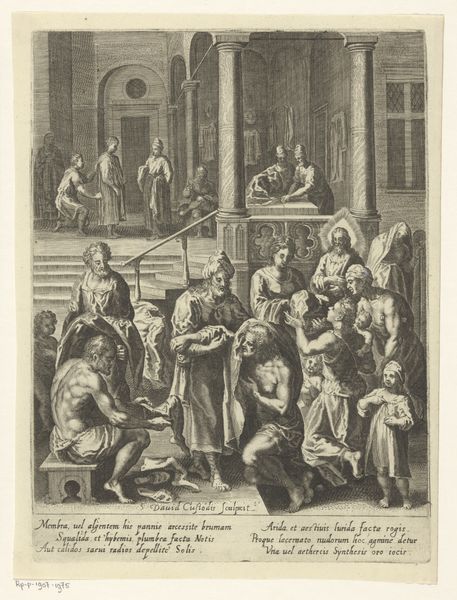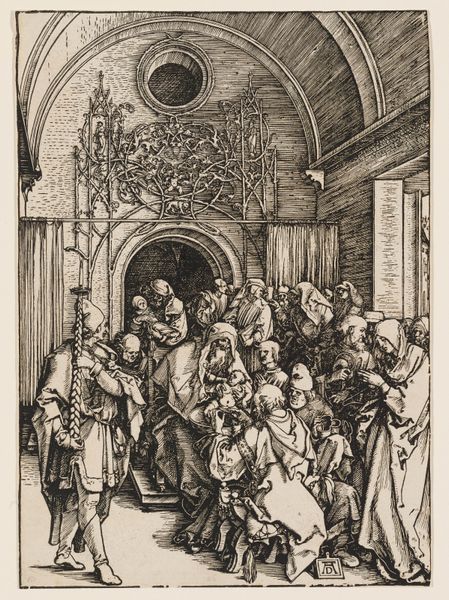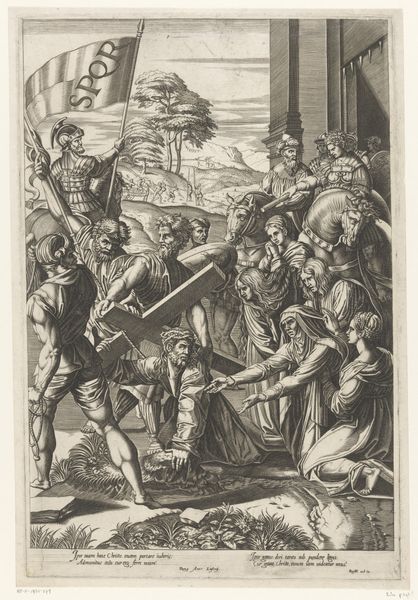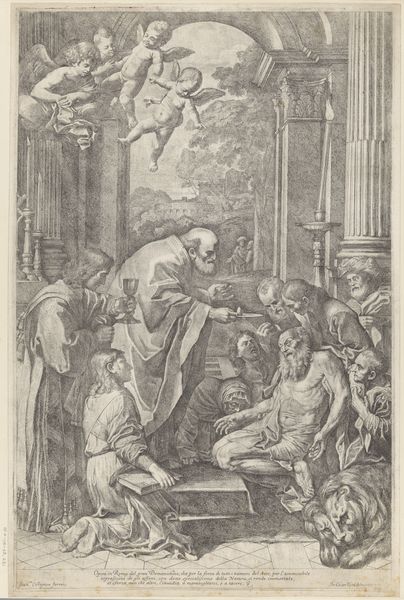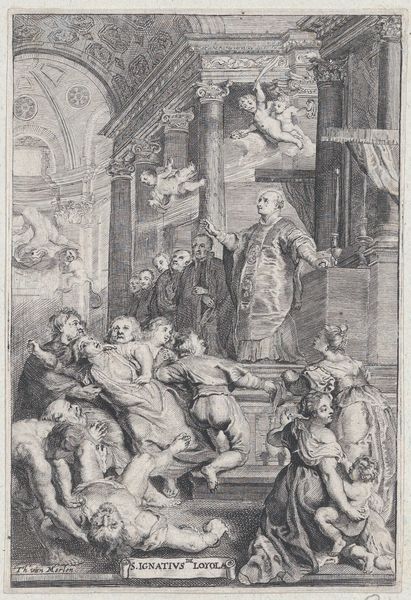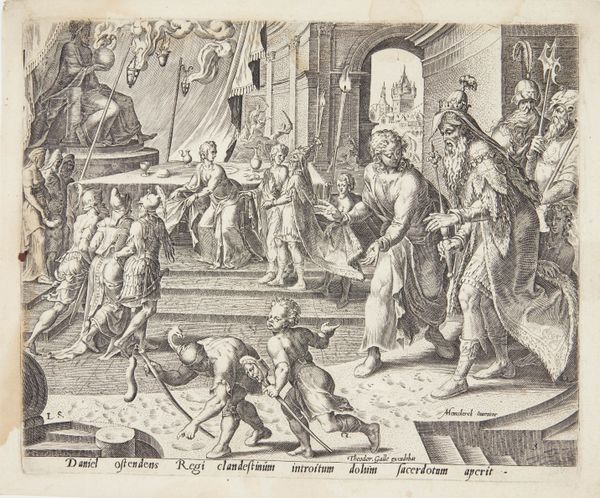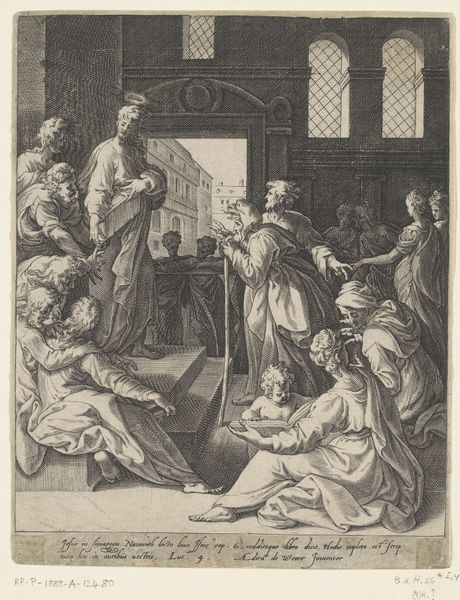
The Adoration of the Magi with the Virgin, Christ Child, and Joseph at center, set against architectural details 1570 - 1615
0:00
0:00
drawing, print, engraving
#
drawing
# print
#
figuration
#
11_renaissance
#
men
#
history-painting
#
engraving
#
virgin-mary
Dimensions: 15 3/8 × 10 3/4 in. (39 × 27.3 cm) Plate: 15 3/16 × 10 9/16 in. (38.5 × 26.8 cm)
Copyright: Public Domain
Curator: Looking at this densely populated scene, the fine lines and overall composition make me feel as though I'm observing something incredibly intricate and meticulously planned. Editor: It is! What we’re looking at is “The Adoration of the Magi with the Virgin, Christ Child, and Joseph at center, set against architectural details.” This print, made with engraving, is credited to Cherubino Alberti, sometime between 1570 and 1615. It’s a classic Renaissance take on a timeless narrative. Curator: The architecture! It’s not at all what I’d expect for the Nativity. The Magi seem to be approaching the Holy Family on a stage set rather than a humble manger. It’s… theatrical! Are we meant to interpret the Holy Family as royalty? Editor: Absolutely. Think about the context in which this print was created. During the Renaissance, art served many functions, especially reinforcing established social hierarchies and communicating specific messages about power and divine authority. Placing this intimate biblical scene amidst grandiose architecture and classical motifs elevates the status of the Holy Family but, importantly, also reinforces the cultural and political power structures of the era. Curator: So the Roman ruins are not so ruinous after all. Editor: Indeed, they symbolize a connection to the past, while subtly referencing the power structures of Rome. This reimagining helped people during the Renaissance situate themselves within a broader narrative of history and faith. And as this artwork has figuration elements, a Virgin-Mary representation, plus history painting, is also easy to assimilate for that timeframe. Curator: I guess in today’s terms we'd consider the Renaissance a giant exercise in brand reinvention! Editor: In a way, yes! Artists frequently navigated a complex dance between the sacred, classical tradition, and contemporary society, with images like this carefully crafted to resonate across multiple layers of meaning. I believe it would have been seen as a sign of power from Rome, or Italy overall, back then. Curator: I appreciate how you've connected it back to the socio-political dynamics of the period. Looking at the delicate detailing, this isn't just devotion; it's Renaissance power dressing at its finest! Editor: Exactly. Now that you mention it, let’s take note of how effectively printmaking disseminated religious ideas to wider audiences during the Renaissance. Curator: True, how wonderful for everyone to access prints instead of being exclusive for rich collectors! That completes my perspective about the socio-political influences in fine art during the Renaissance.
Comments
No comments
Be the first to comment and join the conversation on the ultimate creative platform.
